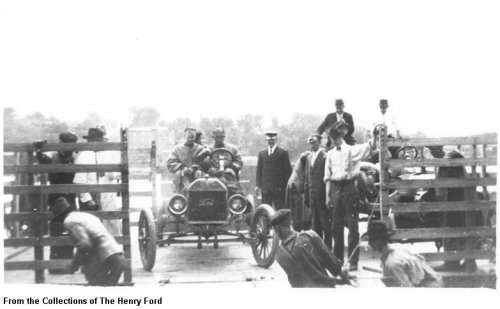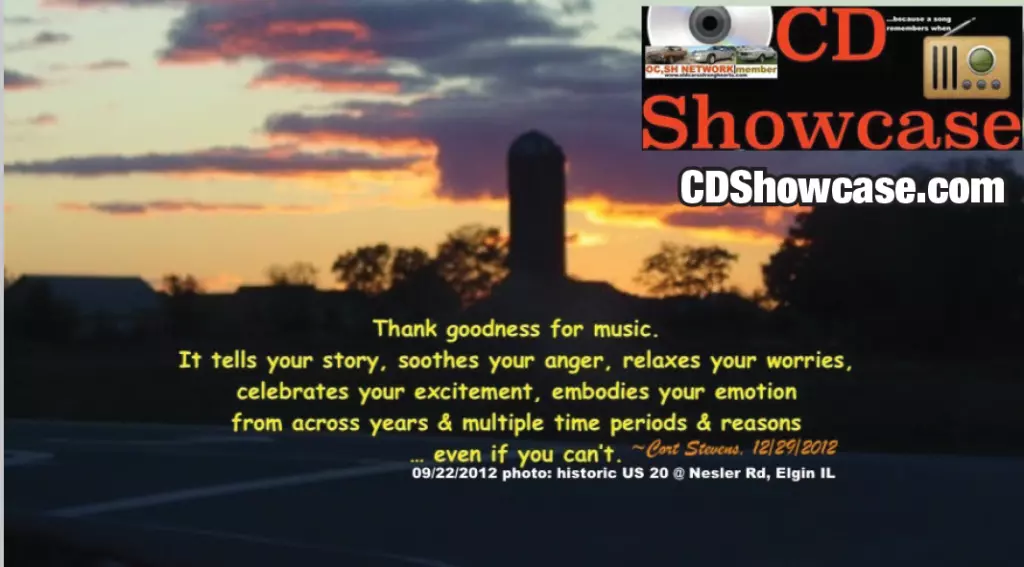Wednesday 23rd June 1909
A Ford Model T crossed the finish line in the New York City to Seattle Endurance Race after 22 days and 55 minutes to claim the Guggenheim Cup and a $2,000 first prize. A Shawmut came in 17 hours later to win the second-place prize of $1,500, and an Acme car came in on 29 June to claim a $1,000 third prize. The Ford was later disqualified for having switched engines en route. The New York-to-Seattle or Ocean-to-Ocean Endurance Race was dreamed up by Robert Guggenheim to coincide with the start of the equally little-known Alaska-Yukon-Pacific Exposition held in Seattle in 1909. Seattle is better-known as sponsor of the 1962 World’s Fair which saw the debut of the Space Needle. The “A-Y-P”, as it is sometimes called, has been largely forgotten, though the 1962 event was in fact developed with the earlier A-Y-P in mind. It was meant to showcase Seattle as a gateway city to Alaska and western Canada as well as the Pacific Rim in general. This all occurred in the wake of the Klondike Gold Rush when thousands of people were headed northwest to seek their fortune in the Yukon and Seattle was a major stopover along the route.Guggenheim was, in part, motivated by his interest in the “better roads” campaign to create a better road system for the country and make roads more suitable for automobiles. Guggenheim had hoped to attract at least 30 participants for the race but, unfortunately, the affair had problems from the start. Deaths from automobile accidents were a public concern even then–324 people had been killed in 1907 alone–and the Manufacturers’ Contest Association refused to sanction the event. Organizers eventually promised that all speed limits would be obeyed and even dropped the word “race” from the event name and called it an “Endurance Contest,” which was probably more accurate anyway. The prize, ponied up by Guggenheim himself, was $2,000 and a trophy plus bragging rights. Unfortunately, only six contestants entered. The start of the race coincided with the start of the A-Y-P on June 1, 1909. President William Howard Taft pressed a golden telegraph key to open the fair and also as a signal to the mayor of New York, George B. McClellan (son of the Civil War General), to fire a golden revolver to start the race. The Stearns dropped out due to mechanical problems on the outskirts of New York City. The rest faced a daunting challenge of summer rains producing deep mud, streams and rivers with few bridges (they often crossed on railroad trestles), and snow in the mountains. The decreased weight of the Fords was an advantage; when stuck, they were light enough for a couple of men to lift up and put wooden planks under the wheels for traction. The race was followed nationally through newspaper accounts. This paragraph ran in the New York Times on June 16: “Hard luck befell the cars in the New York to Seattle automobile race during the past twenty-four hours, and their positions have changed. The Acme car stuck in the mud at Pierce, forty miles south of Cheyenne, early this morning and was nearly all day extricating itself.” Finally, 22 days later Ford No. 2 crossed the finish line at Drumheller Fountain on the University of Washington campus (the fountain is still there) and was declared the winner. The Shawmut crossed the finish line 17 hours later, closely followed by Ford No.1 and the Acme a week later. The Itala dropped out in Wyoming. Ford immediately began a massive advertising campaign touting the inexpensive, lightweight Model T as the best automobile in the race. Sales jumped from 239 in 1908 to over 12,000 in 1909 and kept climbing from there; by 1914 Ford was producing more cars than all other manufacturers combined and by 1916 more than half the cars in the world were Model Ts. Some have even argued that the race saved the company.






